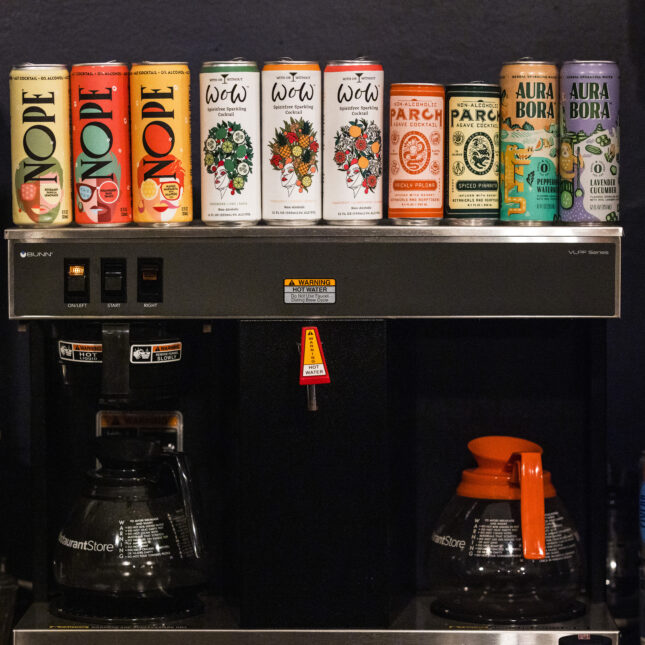
The non-alcoholic beverage market is booming right now: zero-proof bottle shops and bars are popping up across the country; a non-alcoholic beer brand is even taking over as the top selling beer at Whole Foods. And the Olympic Games have their first beer sponsor, courtesy of alcohol-free Corona Cero.
While it’s great that more people are taking to heart public health messages that reducing alcohol consumption can improve well-being and extend life, an important lesson from vaping as a replacement for cigarettes is being overlooked: What may be good for adults may be harmful to kids. Without any meaningful restrictions on the sale of non-alcoholic beverages to youths, the country is just one JUUL-like marketing push away from a potential public health crisis.
We recently contacted alcohol regulators and health departments in every U.S. state and learned that the majority of states lack age restrictions on the sale of non-alcoholic beverages. Some local laws exist, and individual retailers can choose to set restrictions. Target, for example, recently began carding for non-alcoholic beverages to confirm 21 years of age in their brick-and-mortar stores. But children and teens are, by and large, legally permitted to purchase non-alcoholic beverages. This is a huge liability.
International data on youths’ use of non-alcoholic beverages is revealing. Studies involving elementary, junior, and high school students in Japan found that many use non-alcoholic beverages: between 20% and 33% of students surveyed had consumed non-alcoholic beverages in the past year. For high school youths in Taiwan, exposure to marketing of non-alcoholic beverages by social media influencers increased their purchasing and consumption. U.S.-based studies aren’t available yet, but there are anecdotes: one retailer reported that 20% of its non-alcoholic beverage stock was being stolen by high schoolers.
Taken on their own, these trends may not be that worrisome — these are non-alcoholic beverages, after all. But this behavior doesn’t exist in a vacuum: in all four studies, drinking non-alcoholic beverages was associated with kids’ increased interest in drinking, as well as actual drinking of alcoholic beverages.
The path from non-alcoholic beverage consumption to alcohol use among youths appears to be fairly direct. Regulated to contain less than 0.5% alcohol by volume, non-alcoholic beers, wines, liquors, and premade mocktails mirror the look and taste of their alcoholic siblings. That may be great for some adults who want to cut back on their consumption of alcohol. But among minors, consuming non-alcoholic beverages can socialize them to the drinking culture, with the beverages being perceived as cool, adult, and modern. These types of experiences and associations can then pique interest in full-strength alcohol — perhaps due to hoping that alcohol will enhance the experience, or trying to emulate influencers or celebrities who drink.
Because many alcohol producers now make non-alcoholic products, consumption of non-alcoholic beverages can familiarize young consumers with specific brands, increasing the likelihood of purchasing those brands’ alcoholic versions in the future. At the same time, non-alcoholic beverages enable alcohol-naive consumers to develop a taste for the flavor profile, without the sensations that can be unappealing to new drinkers, like a bitter taste or the sensation of burning in the mouth and throat.
While consumption of non-alcoholic beverages by U.S. children and teens does not yet seem to be widespread, the lack of sales and marketing restrictions leaves the possibility wide open for a future marketing push to influence uptake among younger people, posing a self-inflicted public health risk.
What the U.S. needs — before problems emerge, not after — is to prohibit the sale of non-alcoholic beverages that mirror alcoholic beverages to people under age 21.
Prevention strategies involving marketing and availability are also needed. In 2023, the World Health Organization called for policies that prohibit non-alcoholic beverage ads that use colorful or playful aesthetics that could appeal to children, as well as ads that associate non-alcoholic beverage products with alcohol-based ones. Other ways to keep kids from being attracted to non-alcoholic beverages would be to increase taxes on them, limit locations where non-alcoholic beverages can be sold, and — counter to the new Olympic Games partnership — restrict exposure to non-alcoholic beverage ads overall.
The time to do this may be ticking away, as the marketing of non-alcoholic beverages is already expanding. Current marketing tactics encourage non-alcoholic beverage use in new contexts where alcohol is not typically consumed, such as at the gym.
The potential public health benefit of non-alcoholic beverages comes from their being consumed as a substitute for alcohol — not increasing their use by introducing them into novel contexts or to groups who generally do not consume alcohol.
Non-alcoholic beverages are made for adults. Their marketing and sale to minors shouldn’t be permitted. And the country shouldn’t have to look to Target for guidance on commonsense public health policy. Regulatory guardrails are needed now to be proactive, rather than reactive, on this issue.
Molly A. Bowdring is a clinical psychologist in Stanford’s Addiction Medicine Dual Diagnosis Clinic and a postdoctoral scholar at the Stanford Prevention Research Center who studies substance use behaviors. Aaron S. B. Weiner is a clinical psychologist in Lake Forest, Illinois, and a past president of the Society of Addiction Psychology. Judith J. Prochaska is a clinical psychologist at Stanford Health Care and a professor of medicine and deputy director of the Stanford Prevention Research Center at Stanford University.
LETTER TO THE EDITOR
Have an opinion on this essay? Submit a letter to the editor here.
To submit a correction request, please visit our Contact Us page.











STAT encourages you to share your voice. We welcome your commentary, criticism, and expertise on our subscriber-only platform, STAT+ Connect